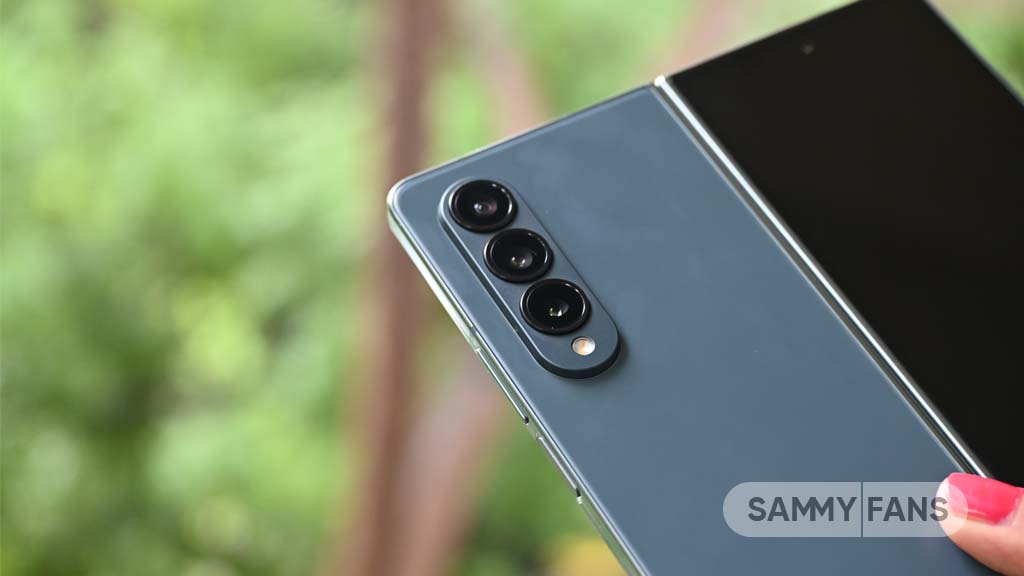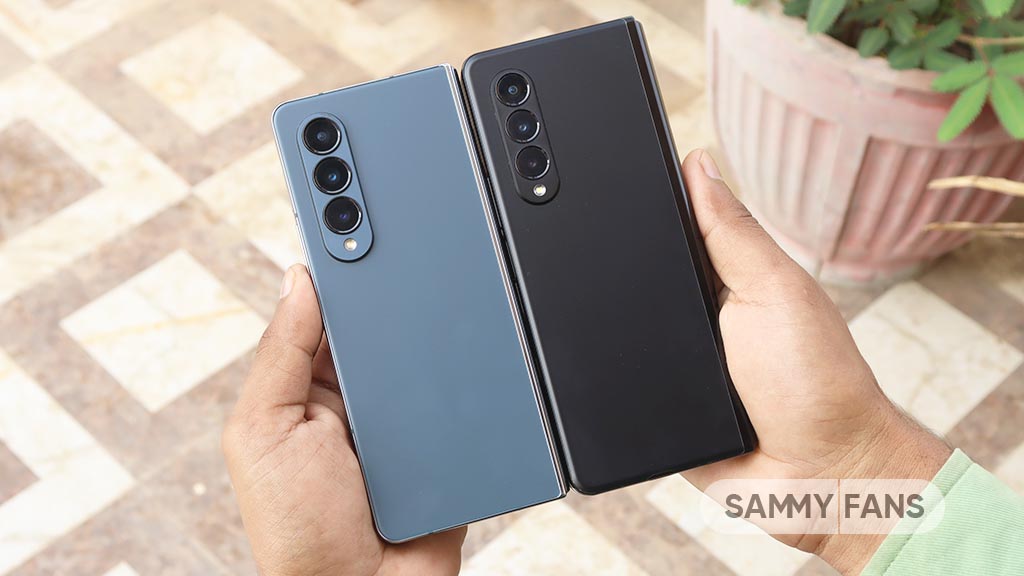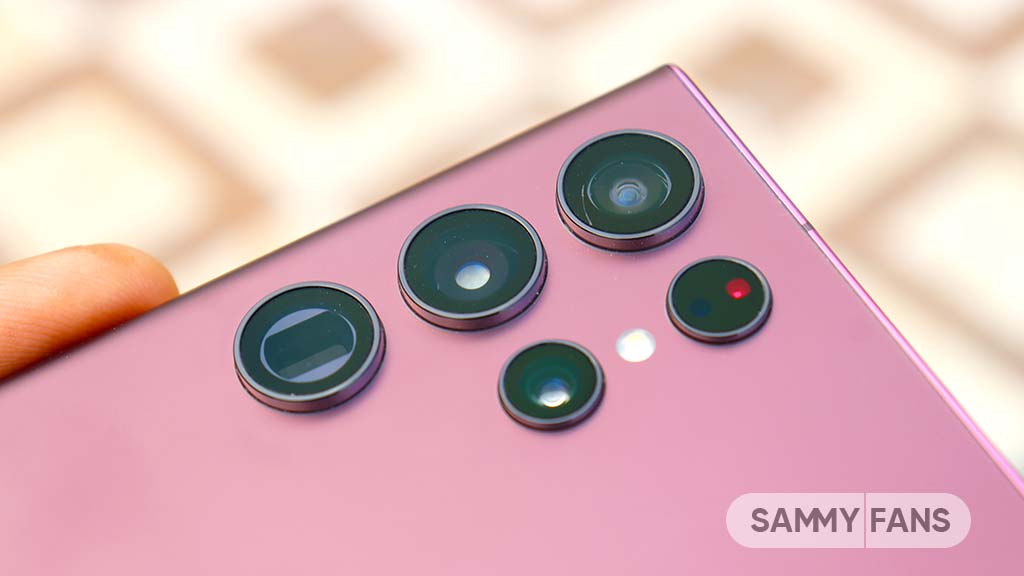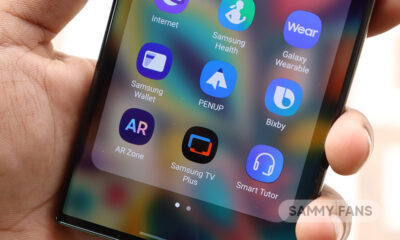Samsung
A tech lover’s journey with the Samsung Galaxy Z Fold4: A tale of disappointment

I have been a huge fan of technology, always eager to explore the latest electronic gadgets including smartphones, headphones, laptops, and several others. I have owned the Samsung Galaxy Z Fold4 5G for two years now, using it as my secondary phone for the last year.
I have always treated it carefully, so you can imagine my situation when I noticed a small black dot on the inner screen of the fold. It wasn’t long before the entire inner display stopped working, while at the same time, the outside screen remained just fine.
This has been quite a setback for me, particularly because I paid over $2000. You expect something that expensive to last, right? But here I am, with a phone where the main feature—the folding screen—is dead. Samsung wants around $650 to fix it, which seems a lot, especially since the phone itself is now only worth around $800-900 if I go for the trade-in. This questions how well these expensive foldable phones hold their value over time.
What’s even more frustrating is not knowing why the screen failed. After using various Samsung foldable phones over the years, this issue makes me think twice about the reliability of the foldable. It’s not just about my experience; it’s a concern for anyone interested in foldable technology.
I am highlighting a difference between Samsung’s marketing narrative, where the company positions itself as a leader in innovation and customer service and the experience with its products. The failure of the Samsung Galaxy Z Fold4’s inner display questions whether Samsung truly stands by its products when the product faces issues.
By sharing my experience here, I want to inform other buyers like me about the potential pitfalls of purchasing such high-end tech. I also want to influence Samsung to reconsider its approach to customer service and product reliability by bringing attention to these issues.

Despite being excited about the concept of foldable phones, especially the easy multitasking feature (my favorite), this negative experience has led to hesitation (or doubt in my case) about future purchases.
I hope Samsung will recognize these customer experiences and attempt to address such issues, either through improved product design, enhanced customer support, or more transparent communication about product limitations or potential issues.
These sudden breakdowns are damaging Samsung’s foldable phones’ reputation and might make potential buyers think twice before getting one.
Disclaimer
I have reviewed all Samsung Galaxy Z Fold and Flip devices launched to date. I will share more information on my X account. You can connect me there.
Samsung
Samsung Galaxy S25 Ultra vs S24 Ultra: Performance Comparison

Samsung Galaxy flagship phones are performance-focused, especially the Ultra model, next year, S25 Ultra will fill this role with the new Snapdragon 8 Elite processor. In the meantime, we’re getting closer to the launch event and now, we have an early Geekbench result to observe a few performance aspects of this upcoming device.
Flagship phones offer plenty of features, upgrades, and improved software. All of these rely on the chipset to make things work. Each year Qualcomm adds new process technology and core architecture to boost performance.
Samsung has been using a dual-chipset architecture (Exynos+Snapdragon) for years. But Exynos’ past failure in a bug-free experience has led to an outcast from flagship devices. Therefore, the company is now relying on Snapdragon chipsets.
Performance is a crucial selling point and also important to compete against Apple and Chinese Android rivals. The new flagship must also bring significance over its predecessor to give customers some reasons to upgrade from their existing devices.
To anticipate this story, we’ll compare the early Galaxy S25 Ultra Geekbench score against the Galaxy S24 Ultra. Both of these scores will be early benchmarks and not after-launch scores.
Before we move ahead, let’s take a quick look at the single and multi-core.
1. Single Core – It is used for tasks that rely on a single thread of execution such as web browsing, video streaming, and running low-resource consuming apps.
2. Multi Core – All processor cores work together to launch and run high-resource-consuming apps or system programs such as gaming, video editing, and app multitasking.
Galaxy S24 Ultra – Snapdragon 8 Gen 3
The S24U equipped SD 8 Gen 3 chipset is built with TSMC’s enhanced 4nm technology, which is the same as the past two chipsets. It offers up to 30% CPU performance increase and up to 20% power efficiency.
Its single large core goes up to 3.3GHz and the new generation of Adreno GPU has 25% improved graphics and power efficiency.
This phone on Geekbench recorded 2234 points for single core and 6807 points for multi-core. The benchmark recorded four core clusters
- 2 Cores clocked at 2.27 GHz
- 2 Cores clocked at 2.96 GHz
- 3 Cores clocked at 3.15 GHz
- 1 Core clocked at 3.30 GHz

Samsung Galaxy S24 Ultra Geekbench Performance Score with Snapdragon 8 Gen 3 chipset (Source – Geekbench)
Galaxy S25 Ultra – Snapdragon 8 Elite
This new chipset uses TSMC’s 3nm process technology with 2nd generation Oryon CPU. The CPU has 4.32 GHz max speed, 45% improved performance, and 44% power efficiency compared to Gen 3. Its new Adreno GPU uses sliced architecture with 40% more graphical performance and efficiency.
The Galaxy S25 Ultra on Geekbench achieved 3148 points for single core and 10236 points for multi-core. The chipset has two core clusters:
- 6 Cores clocked at 3.53 GHz
- 2 Cores clocked at 4.47 GHz

Samsung Galaxy S25 Ultra Geekbench Performance Score with Snapdragon 8 Elite chipset (Source – Geekbench)
Difference:
The new chipset scored far more than the Gen 3. That sums up a 31+ percent increase in single-core and a 30+ percent increase in multi-core performance.
That’s a big difference and we can give the credit to the new CPU core and the 3nm processing technology for this performance upgrade.
iPhone 16 Pro Max
Samsung Galaxy S25 Ultra will compete against iPhone 16 Pro Max, the latest top-end phone from Apple’s campaign. This features the new A18 Pro chipset processed with second-gen 3nm process technology. Similar to Snapdragon, this chip also focuses on AI and extensive task handling.
These are the Geekbench score for the iPhone 16 Pro Max:
- 3409 points on single-core
- 8492 points on multi-core
The iPhone’s single-core performance is dominant over the Galaxy S25 Ultra. However, the Samsung flagship flips the situation in multi-core with big numbers.
The difference between the two devices comes as the following:
- Apple is 261 points (7.96%) better in Single Core performance
- Samsung is 1744 points (18.62%) better in Multi Core performance
That means, Samsung could provide faster and more efficient performance with the SD 8 Elite chipset in multi-core including all resource-intensive applications. Also, single-core results should not be a big problem in providing a superior user experience.
Unreleased devices
The Geekbench results for Galaxy S24 Ultra and S25 Ultra are recorded prior to their final release. However, it’s noted that the S24 Ultra score didn’t change much after launch. So, we can expect, the S25 Ultra to maintain this Geekbench score even after launch but we’ll have to see what happens.
Conclusion
This comparison for Samsung Galaxy S25 Ultra shows that Snapdragon 8 Elite has achieved a new milestone in performance compared to the 8 Gen 3. Not only that, the phone will also collide with the iPhone 16 Pro Max with new capabilities. Hence, the S25 Ultra will be an exciting flagship to tune in. Read more about this upcoming smartphone in our archive.
Samsung
Samsung extends free screen replacement for Galaxy S21, S21 FE, and S22 Ultra with green line issue

Samsung is offering a free screen replacement for certain Galaxy phones in India that are affected by a green line issue. The company has extended its one-time free screen replacement program for green line affected Galaxy devices including Galaxy S21, Galaxy S22 series, and more.
Several users of the Samsung Galaxy S21 series including Galaxy S21 FE, and Galaxy S22 Ultra have reported seeing a vertical green line appear on their phone screens.
The green line problem has been noticed by many users, especially after installing software updates. However, it hasn’t been confirmed whether the updates are directly causing the issue. Some users report that the green line appears suddenly, even without any updates.
In response, Samsung is providing a one-time screen replacement for certain affected models until December 31, 2024. These phones include Galaxy S21, Galaxy S21 Plus, Galaxy S21 Ultra, Galaxy S21 FE (G990B and G990E), and Galaxy S22 Ultra.

Samsung is not alone in addressing the green line issue. Other brands like OnePlus have also launched similar free screen replacement programs for phones with the green line issue.
However, Google Pixel users are also experiencing the same green line issue, but the company currently only offers a repair policy for its latest models.
If your Galaxy S21 or Galaxy S22 phone is affected, you can take advantage of this free replacement before the program ends on December 31, 2024.
Samsung
Samsung One UI 7: Everything we know about Samsung’s Android 15 update

Samsung will roll out Android 15 to Galaxy devices in 2025, and we had a sneak peek of One UI 7.0 at SDC24. Google is already working on the next Android version, which is confirmed to be made available on Pixel phones by June next year.
Meanwhile, Samsung is still working on the Android 15-based One UI 7.0. The Galaxy S24 series will be the first to get it on the Beta channel. Dozens of Galaxy devices are eligible for this major upgrade, forming a big rollout later this year.
Android 15
The new OS entered Developer Preview in February and Public Beta in April. Google released the final version of Android 15 on October 15 for Pixel devices. The Android 15’s QPR Beta activity has also started ahead of the Android 16 Developer Preview.
One UI 7
At SDC24, Samsung teased some One UI 7 changes and features. The Beta Program will start in late 2024, while Stable set to be released next year. The S23 series received One UI 6 Beta in August last year, but this year’s schedule has entirely changed.
The new update focuses on improving device performance and power efficiency. It’s also well-optimized for the artificial intelligence era. Consumers can expect faster app loading, longer battery backup, enhanced security and privacy, and core improvements at the OS level.
One UI 7.0
Samsung held this year’s Developer Conference on October 3. The event’s stage was utilized to introduce new One UI 7 features and enhancements. The company has also showcased advancements in Tizen and SmartThings. Design principles:
- Simple: Aiming for purposeful simplicity across the UI.
- Impactful: Creating a new signature impression for One UI.
- Emotive: Creating UI elements, like a new blur engine, that elicit a positive emotional response from users.
One UI Beta build can be installed on your primary handset, but we prefer avoiding it. Beta isn’t for you if you don’t want to counter bugs and functional errors. Consider waiting till the Stable rollout commences enjoying One UI 6.1.1.
[Most recent development] The first One UI 7 Beta firmware with a build version ending with ZXKB has been spotted on Samsung’s server.
[Read More] Samsung unveils One UI 7 at SDC24
- Samsung confirmed One UI 7 Beta coming in late 2024 and Stable in early 2025.
- The company is exploring a fresh new design across the interface.
- More new Galaxy AI features will be expanded to the A series.

Previous updates:
- [September 20] TM Roh personally supervised the development of One UI 7. He began to pay special attention to the software experience, more than ever before.
- [August 27] Google is unlikely to push the Public Android 15 update in September this year. It’s still working to improve the stability of the new OS, with rollout starting in October.
- [August 5] Samsung insider claims that One UI 7 Beta isn’t coming very soon.
- One UI 7 Beta has not yet been released but various changes have emerged. The software comes with several design changes, separated notification and quick settings, dynamic pill, and more rounded UI elements.
- After the S24 Plus, Samsung’s Android 15 Beta was spotted on Galaxy S22, S23, S23 FE and S21 smartphones.
- One UI 7 Beta is getting tested on the Galaxy S24 series internally. Recently, an S24+ was spotted running the new OS on Geekbench with minor performance improvements.












